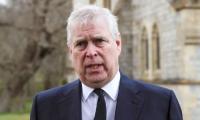KARACHI: The State Bank of Pakistan (SBP) on Tuesday further trimmed its forecast for economic growth for the ongoing fiscal year 2018-19, citing a weaker outlook for public finance and external imbalances weighted to the downside.
In its first quarterly report on the state of economy, the 6.2 percent target for real GDP growth seemed unachievable with the policy focus now tilted towards macroeconomic stabilization. The central bank predicted 4.0-4.5 percent real gross domestic product growth, down from its October forecast of 4.7 to 5.2 percent growth.
“... It has now become important to urgently initiate and expedite the needed structural reforms in the economy,” the bank said.
“In effect, this can help preserve growth, particularly at the juncture where the economy has begun to lose momentum.” The bank said the PTI government, after resuming power, immediately announced cuts in development spending, partially reversed tax relief measures and also explored avenues to bridge the external financing gap. But the risk to the growth outlook stems from the expected lower growth in agriculture and the large-scale manufacturing sectors.
“Consumer industries would also feel the brunt of reduced demand, as purchasing powers were hit by rising inflation, increasing interest rates, and adverse currency movements,” the SBP said.
The country achieved a 13-year high growth of 5.8 percent during the last fiscal year. The central bank said the economy had begun to show signs of overheating and policy actions in the form of regulatory measures, exchange rate depreciation and an increase in policy rate were implemented to contain it.
“The policy environment through the rest of the year is likely to centre around achieving macroeconomic stability. SBP has already increased the policy rate by another 150 bps (basis points) in November 2018, in order to check inflationary pressures and rising inflationary expectations,” it added. The SBP’s inflation forecast for the full year stands at 6.5 to 7.5 percent, which takes into account the impact of revisions in gas tariffs and the second-round impact of exchange rate depreciation.
The bank sees budget deficit to increase to 5.5 to 6.5 percent of GDP from its last forecast of 5.0-6.0 percent of GDP in October. The SBP expects current account deficit to narrow down to 4.5-5.5 percent of GDP, from its earlier forecast of 5.0-6.0 percent, supported by decline in international oil prices.
Oil prices have fallen by a quarter during July-September FY19 period and reached a year-low level of $54 per barrel. Current price levels would lift some pressure from Pakistan’s oil import bill in at least the second quarter of the year.
The current slowdown in non-energy imports might continue going forward amidst weakening domestic economicactivity, exchange rate depreciation, and increase in import duties.
“At the same time, exports might gain from exchange rate depreciation and increase in consumer spending in the advanced economies, but their momentum could possibly be weakened by rising cost pressures,” it added.
Estimates for overall foreign exchange earnings were on the higher side, as workers’ remittances were projected to sustain a high growth. “Financing of the current account might improve going forward, as there is an expectation of receiving higher foreign exchange inflows from both private and official sources during the second half of FY19,” the bank noted.
“In particular, recent bilateral arrangements, including the deferred oil payments facility, are likely to be available from January 2019 onwards. Not only would this bolster the country’s foreign exchange reserves, but also ease pressures in the domestic foreign exchange market.”
The bank said overall macroeconomic environment remained challenging during the first quarter of FY19 as “suggested by the preliminary data”. The primary concern was the steep rise in global crude prices, which not only reinforced the already strong underlying inflationary pressures in the economy, but also eclipsed emerging improvements in the external sector.
The report said the monetary policy continued to move along the adjustment path with the underlying inflationary pressures remaining strong and the twin deficits staying at elevated levels.
During the two Monetary Policy Committee (MPC) meetings that were held during the quarter, the policy rate was raised by a cumulative 200 basis points. The SBP said both the agriculture and industrial sectors had underperformed during the Q1-FY19 relative to the same period last year.
“Within the agriculture sector, preliminary estimates indicate that the production of all major kharif crops remained lower compared to the last season,” it added. The LSM sector, meanwhile, contracted by 1.7 percent during Q1 FY19 after experiencing health growth of 9.89 percent during Q1 FY18. Noticeably, the production of construction-allied and consumer durable segment, which were the major drivers of growth last year, decelerated on year-on-year basis.
“In overall terms, the interplay of supply and demand-side dynamics disrupted the growth momentum of the sector,” the bank said. It said the underperformance of the commodity-producing sector, along with a slowdown in import quantum, was expected to have a spillover impact of the services sector.
US State Department spokesperson Matthew Miller at the US State Department on October 01, 2024 in Washington, DC.—...
Responding to questions, spokesperson says Dhaka’s next steps to bring Hasina back will depend on India’s reply
President expressed hope that they would play their role in strengthening bilateral relations with Pakistan
Sources say that National Assembly Secretariat had initially planned to convene PAC meeting on December 26
Judge dismisses applications of Imran Khan, Fawad Chaudhry and Omar Ayub for providing evidence
New system aims to improve connectivity and address long-standing complaints of slow internet speeds







